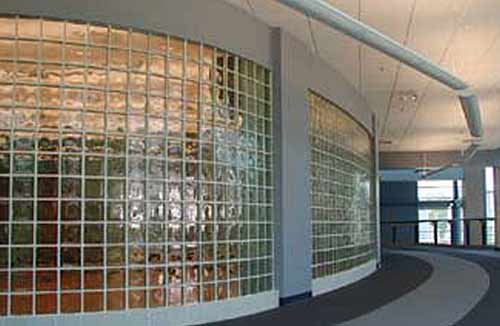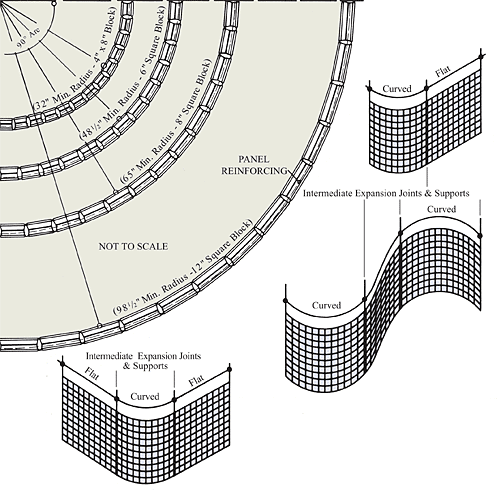Designing With Glass Block: Abundant Applications Provide Practical, Aesthetic and Green Solutions
Â
|
Â
Â
For curved construction, 45-minute fire ratings can be obtained provided that the maximum allowable curvature does not exceed a ratio of 2:1 with respect to length of radius to length of assembly width (i.e., chord length), and only installed within masonry fire-rated walls.
Surface condensation. Resistance to surface condensation is considered impressive for hollow glass block because of the double face and partial vacuum construction of hollow glass block. In fact, standard glass blocks are considered condensation-free to minus 15 degrees Fahrenheit and thin blocks to minus 8 degrees Fahrenheit. This compares to a single-glaze flat glass, for which condensation can occur when the exterior temperature reaches 33 degrees Fahrenheit.
Â
Â
Â
|
Â
Light and heat transmission.The light transmission in glass block is nearly equal to that of flat glass. For example, the following figures apply to light transmission:
- Flat sheet glass-90 percent of visible light that strikes is transmitted
- Solid glass block-80 percent is transmitted
- Standard and thin block-75 percent is transmitted
- Tightly ribbed patterns-50 percent is transmitted
- Fibrous glass inserts and thick-faced block-50 percent to 55 percent is transmitted
The thickness and whether the block is hollow or solid affect the heat transmission value (U-value):
- Sheet glass-U-value = 1.04
- Solid glass block-U-value = 0.87
- Thin block-U-value = 0.57
- Standard block-U-value = 0.51
Thermal resistance, or R-value, is the inverse of U-value. The solid glass block R-value is 1.15. With hollow glass block and its inherent partial vacuum, a jump in R-value occurs: The R-value of thin glass block is 1.75 and the R-value of standard glass block is 1.96.
The differences between the shading coefficient of glass block and flat sheet glass is significant. Thin glass block can reduce the shading coefficient of 1.00 for 1/8-thick flat sheet by 35 percent to 0.65 (and down to 0.45 for tightly ribbed patterns). Contributing to this, experts say, is the louvering effect of glass block's horizontal mortar joints, which helps reduce light transmission from the higher sun. The size and orientation of the block can, therefore, affect the amount of shading that occurs.
Â











